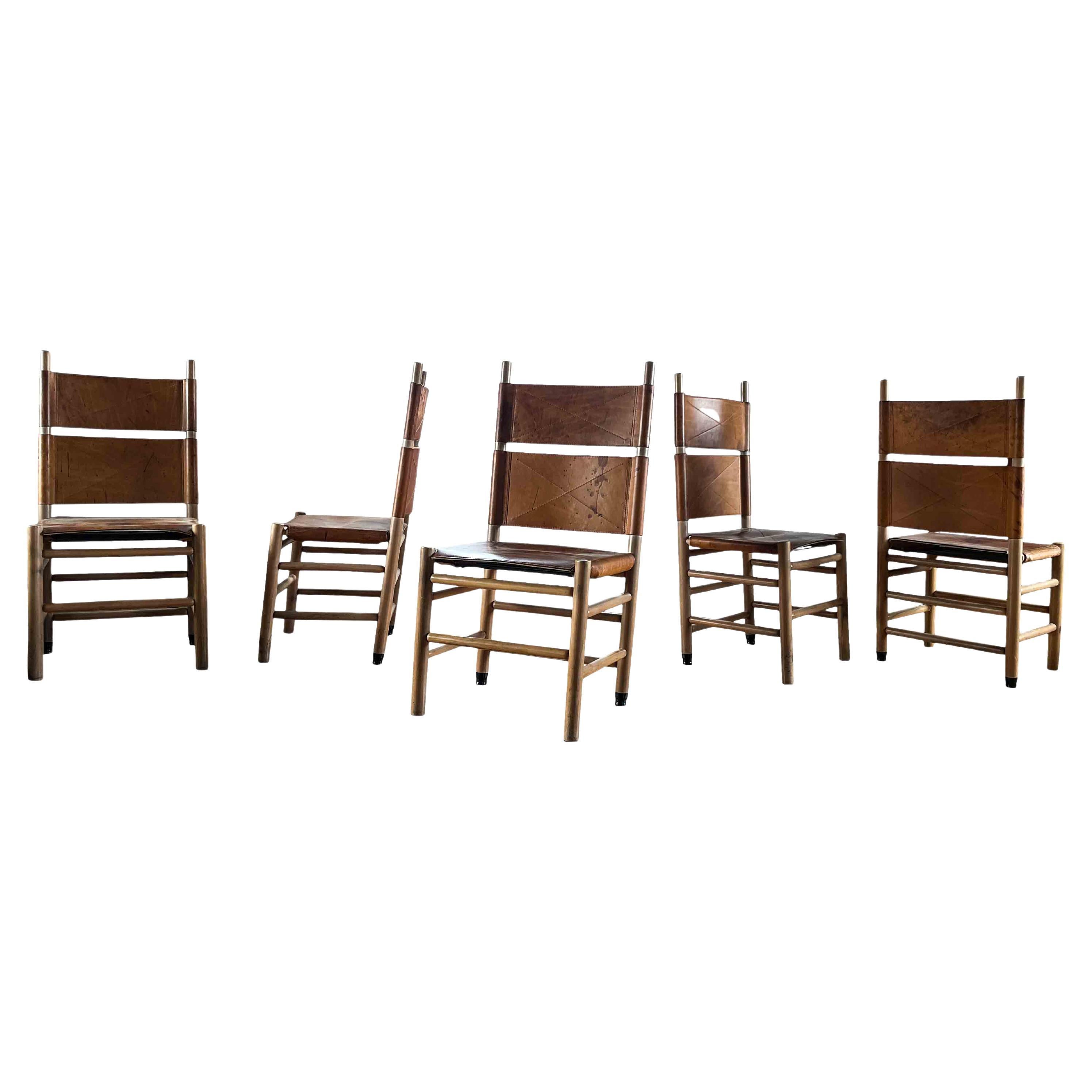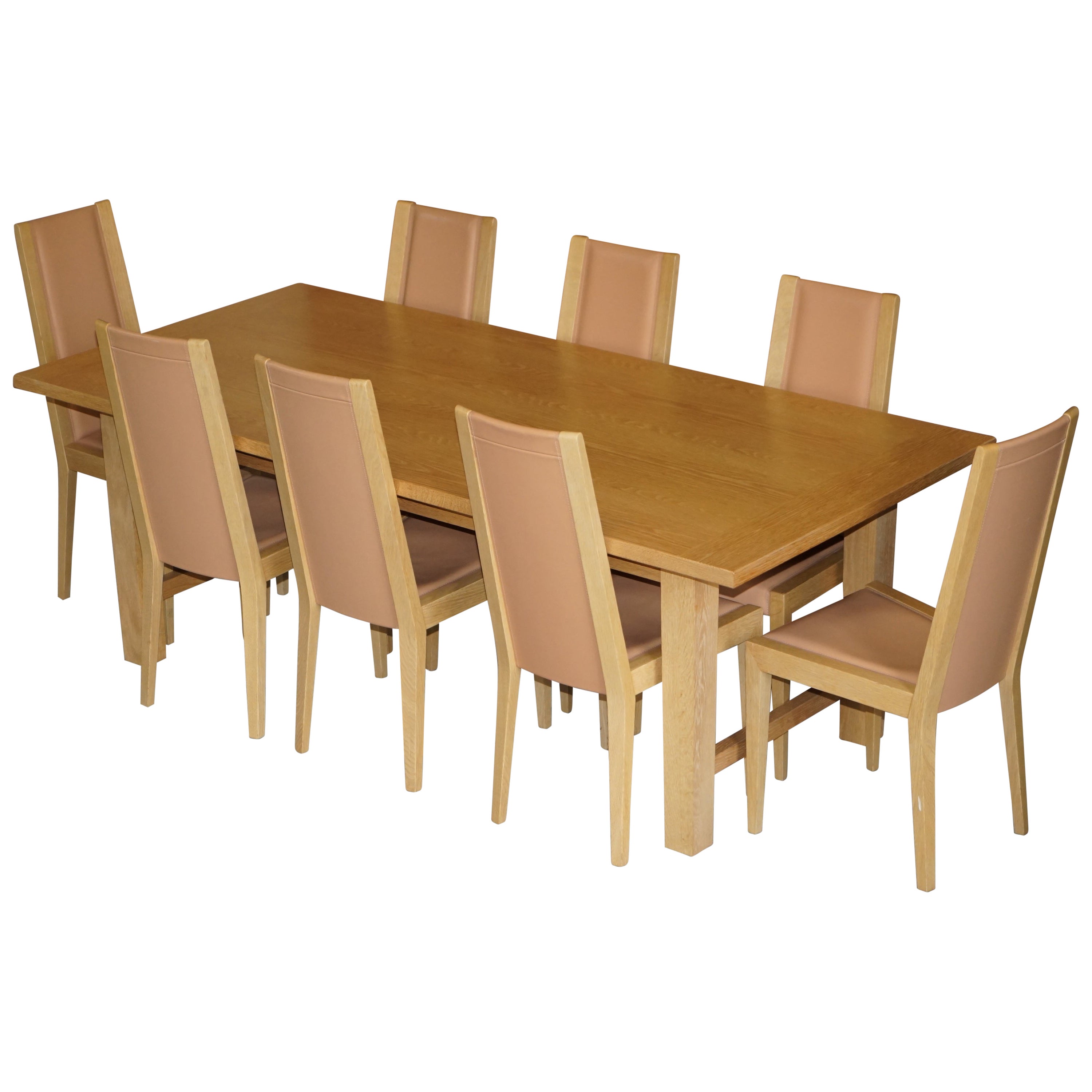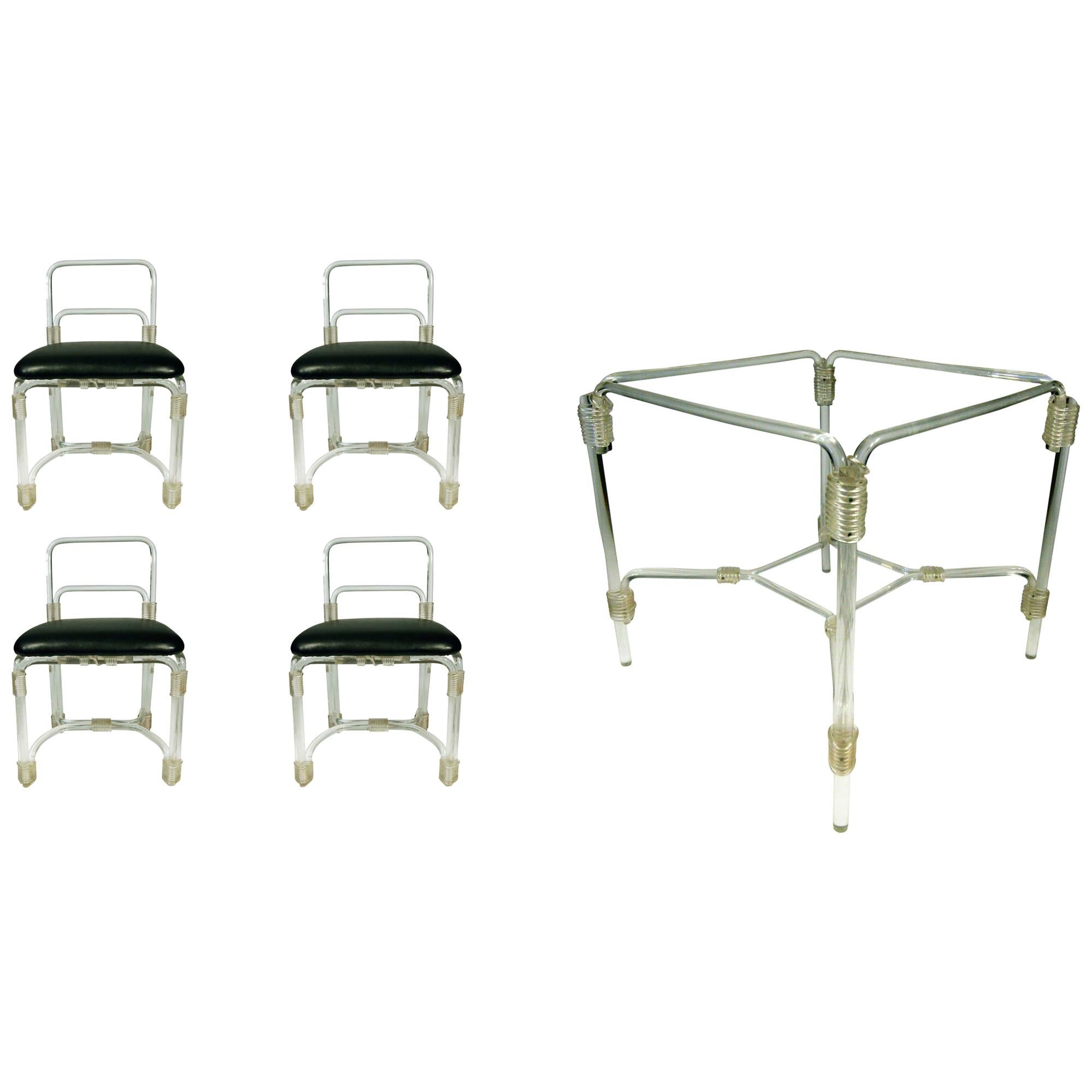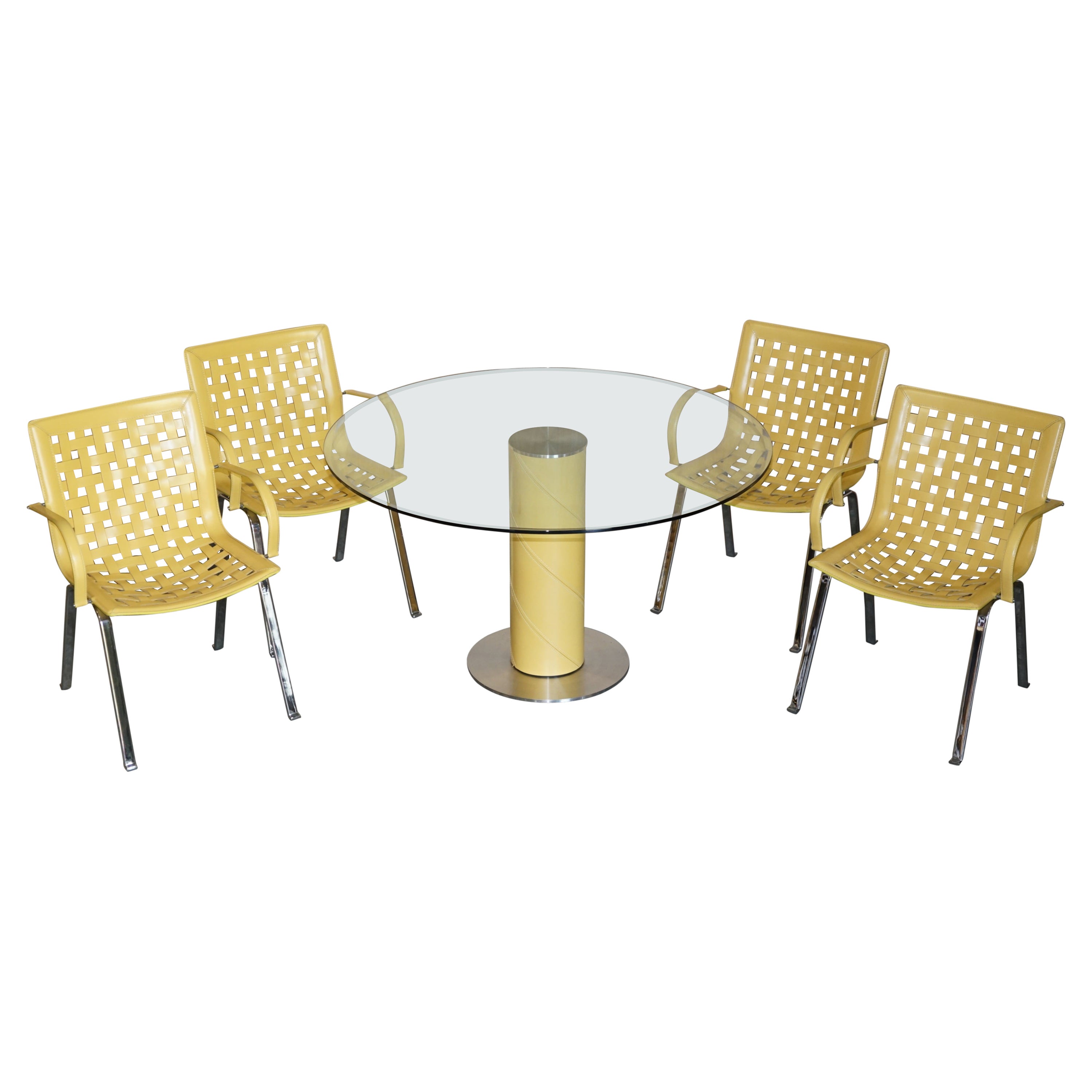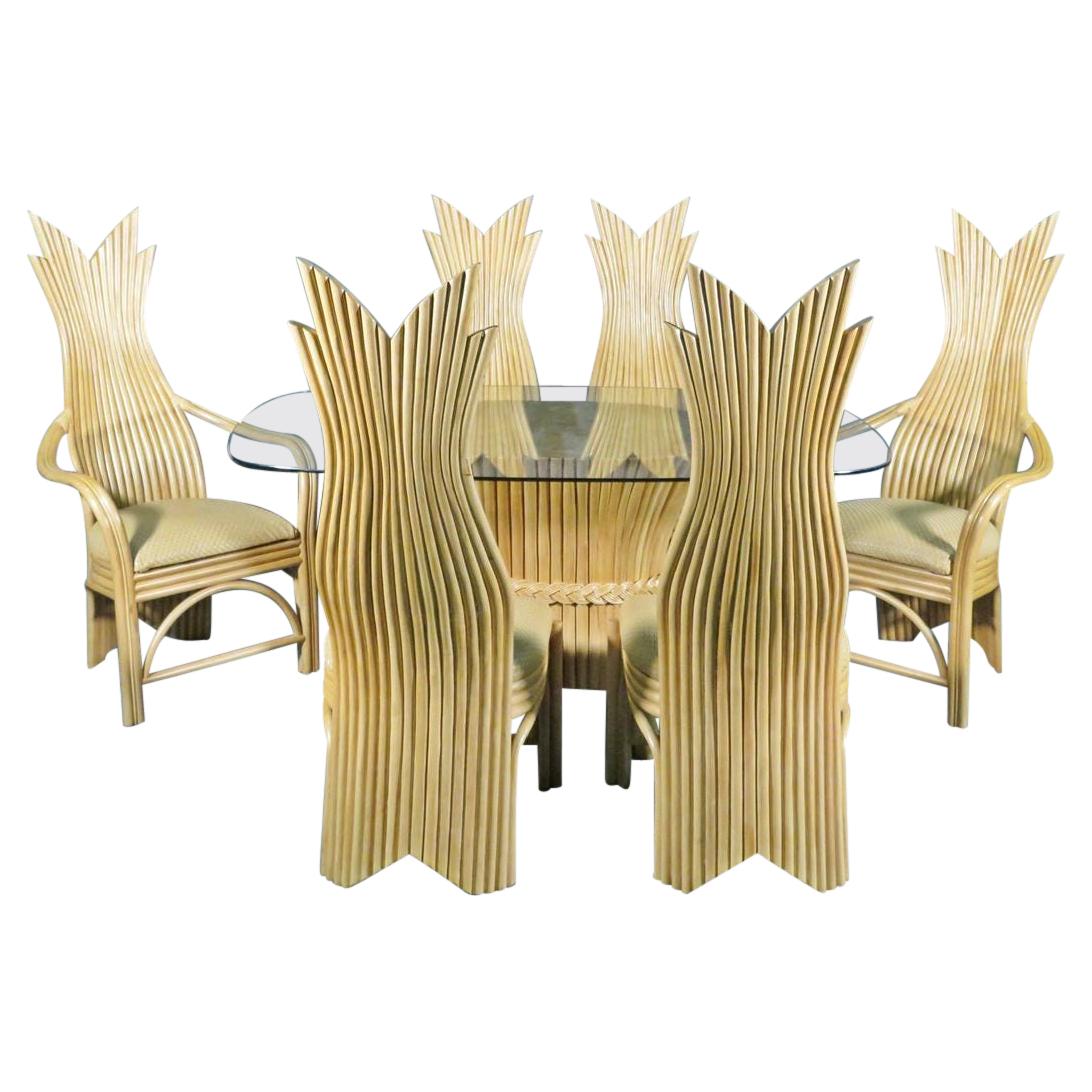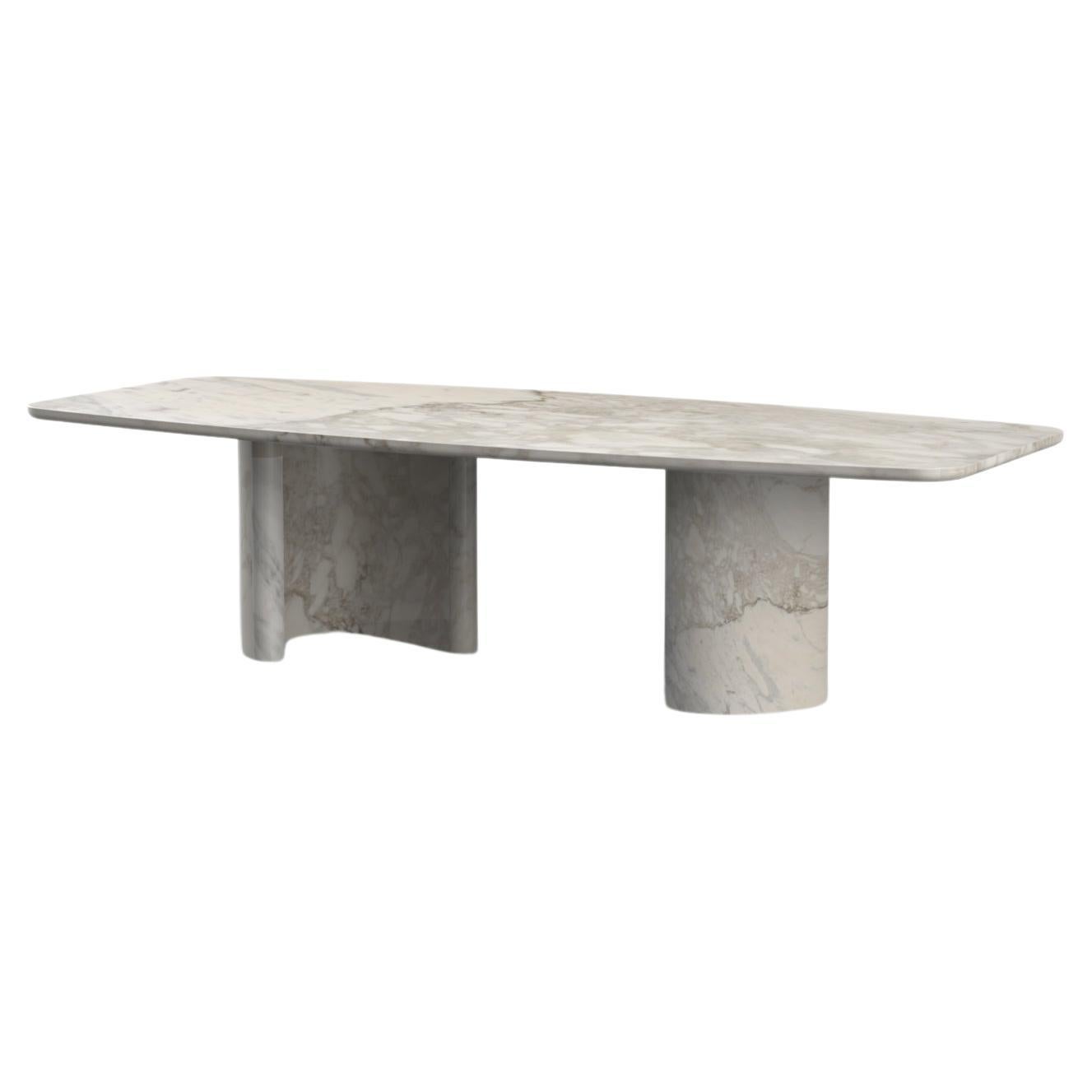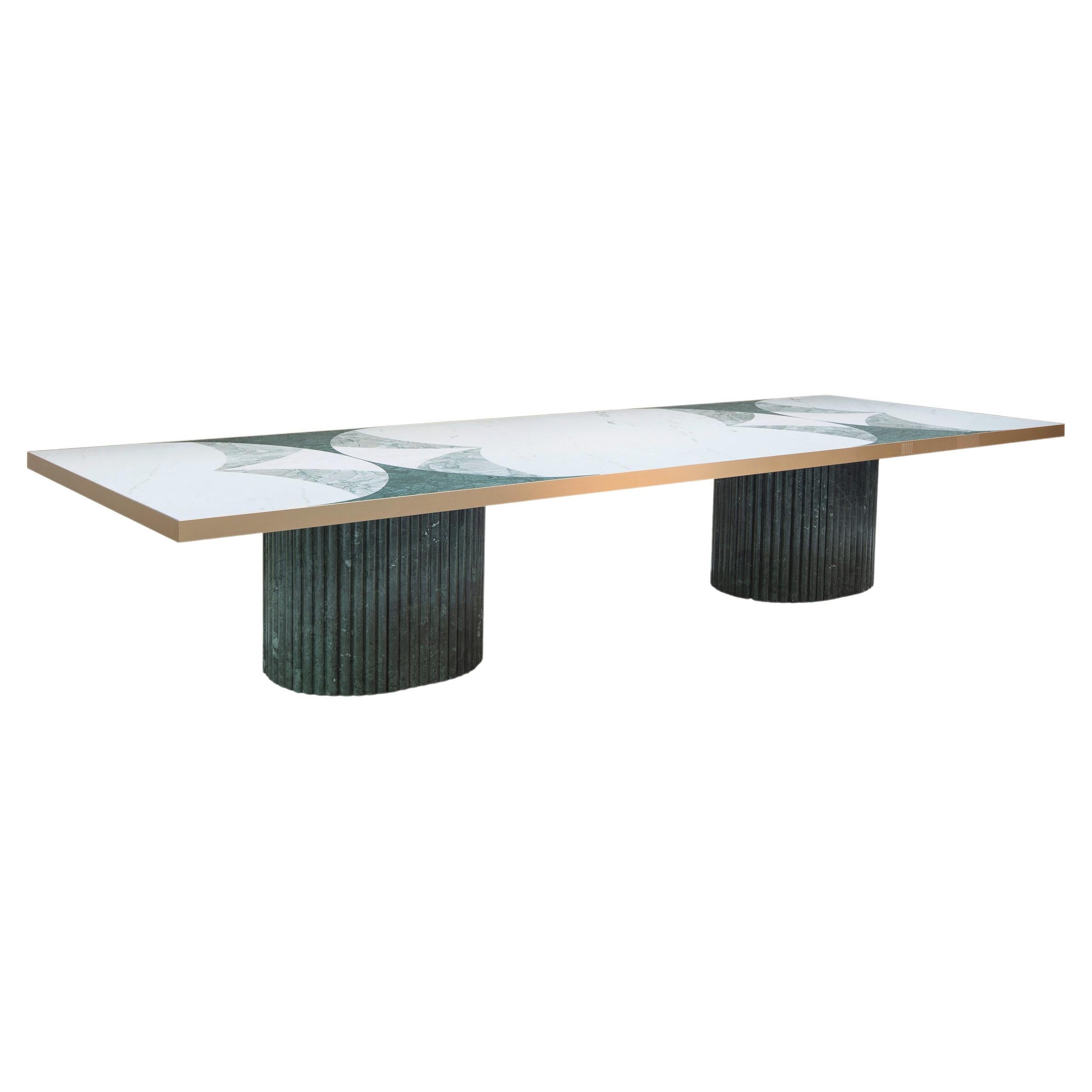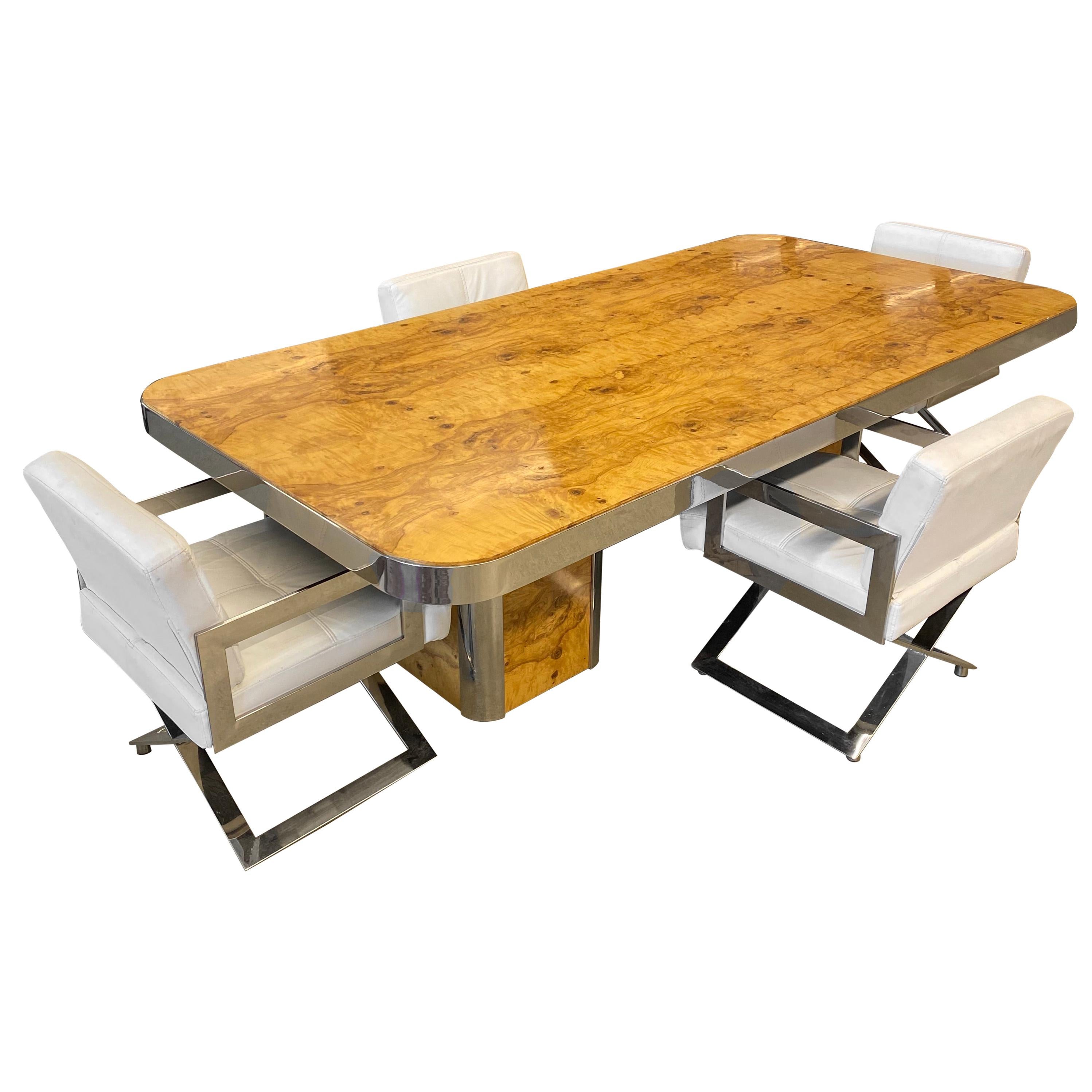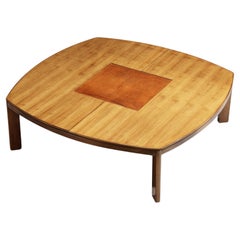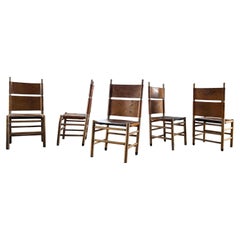
Marble Dining Table with Henning Larsen Dining Chairs 9230 in Cognac Leather
View Similar Items
Marble Dining Table with Henning Larsen Dining Chairs 9230 in Cognac Leather
About the Item
- Creator:Henning Larsen (Designer)
- Dimensions:Height: 28.35 in (72 cm)Diameter: 50.4 in (128 cm)
- Sold As:Set of 7
- Style:Mid-Century Modern (Of the Period)
- Materials and Techniques:
- Place of Origin:
- Period:
- Date of Manufacture:1970s
- Condition:Refinished. Wear consistent with age and use. Every item Morentz offers is checked by our team of 30 craftsmen in our in-house workshop. Special restoration or reupholstery requests can be done. We guarantee a very highquality standard, ask our design specialists for detailed information.
- Seller Location:Waalwijk, NL
- Reference Number:Seller: 45011608, 450010551stDibs: LU933123178232

Established in 2006, Morentz has a team of approximately 55 restorers, upholsterers, interior advisers and art historians, making it a gallery, workshop and upholstery studio, all in one. Every day, a carefully selected array of 20th-century furniture arrives from all over the world at the firm’s warehouse, where the team thoroughly examines each piece to determine what, if any, work needs to be done. Whether that means new upholstery or a complete restoration, Morentz's aim is always to honor the designer’s intention while fulfilling the wishes of the client. The team is up to any challenge, from restoring a single piece to its original glory to furnishing a large-scale hotel project.
- Rainer Daumiller Extendable Dining Table with Dining Chairs in Solid PineBy Rainer DaumillerLocated in Waalwijk, NLRainer Daumiller, set of dining table with eight armchairs, pine, Denmark, 1970s. This dining room set contains an extendable dining table and eight dining chairs, designed by Raine...Category
Vintage 1970s Danish Scandinavian Modern Dining Room Sets
MaterialsPine
- Large Italian Dining or Conference Table in Walnut and Cognac LeatherLocated in Waalwijk, NLDining or conference table, walnut, cognac leather, Italy, 1960s This furniture piece's versatility is due to its substantial size, making it an optimal option for various functions...Category
Vintage 1960s Italian Mid-Century Modern Dining Room Tables
MaterialsLeather, Walnut
- Italian Pedestal Dining Table in MarbleLocated in Waalwijk, NLGiancarlo Sala for Marmi Sala&Co, pedestal table, marble, Italy, 1970s This postmodern marble table is designed by Giancarlo Sala and is a striking embodiment of Italian design from...Category
Vintage 1970s Italian Mid-Century Modern Dining Room Tables
MaterialsMarble
- Italian Round Dining Table in Carrara MarbleLocated in Waalwijk, NLRound dining table, white Carrara marble, Italy, 1960s Hailing from Italy during the vibrant 1960s, this round dining table crafted from exquisite white Carrara marble epitomizes the artistry and innovation of postmodern design. Its sleek silhouette is a testament to the skilled craftsmanship of the era. Supported by a single solid marble pedestal...Category
Vintage 1960s Italian Mid-Century Modern Dining Room Tables
MaterialsCarrara Marble
- Angelo Mangiarotti Dining Table in Marble with Set of Six Chairs in TeakBy Skipper, Angelo Mangiarotti, La Permanente Mobili CantùLocated in Waalwijk, NLDining room set consisting of La Permanente Mobili Cantù set of six dining chairs with Angelo Mangiarotti for Skipper 'M1' dining table La Permanente Mobili Cantù set of six dining chairs, teak, black lacquered metal, alcantara, Italy, 1950s Beautiful and elegant set of six Italian dining chairs by La Permanente Mobili Cantù. These delicate chairs are a treat for anyone loving Italian midcentury modern...Category
Vintage 1950s Italian Mid-Century Modern Dining Room Sets
MaterialsMarble, Metal
- Giovanni Michelucci for Poltronova ´Torbecchia' Dining Table and BenchBy Poltronova, Giovanni MichelucciLocated in Waalwijk, NLGiovanni Michelucci for Poltronova, ´Torbecchia', table and bench, walnut, Italy, design 1964 This dining room set consisting of a beautiful table and bench in walnut wood is desig...Category
Vintage 1960s Italian Mid-Century Modern Dining Room Sets
MaterialsWalnut
- Carlo Scarpa Cognac Leather “Kentucky” Dining Chair for Bernini, 1977, Set of 5By Bernini, Carlo ScarpaLocated in Vicenza, ITSet of 5 mod. 783 “Kentucky” dining chairs, designed by Carlo Scarpa for the Italian manufacturer Bernini in 1977. Structure made from oak and walnut timber. Seats and backrest made from cognac leather. Excellent vintage condition. Carlo Scarpa designed this chair for the “Scuderia” series., the last project he made for Bernini. The architect took inspiration from the “shaker” movement. He designed the chair slightly inclined at the front. This feature allows you to swing backward (until you lean on a wall) and remain in balance. Born in Venice on June 2nd, 1906, Carlo Scarpa began working at a very early age. A year after he had first qualified as an architect in 1926, he began working for the Murano glassmakers Cappellin & Co. in a consultative capacity. From 1927, Carlo Scarpa began to experiment with the Murano glass, and this research not only gave him excellent results here but would also inform his progress for many years to come. Between 1935 and 1937, as he entered his thirties, Carlo Scarpa accepted his first important commission, the renovation of Venice’s Cà Foscari. He adapted the spaces of this stately University building that stands on the Grand Canal banks, creating rooms for the Dean’s offices and a new hall for academic ceremonies; Mario Sironi and Mario De Luigi were charged with doing the restoration work on the frescos. After 1945, Carlo Scarpa found himself constantly busy with new commissions, including various furnishings and designs for the renovation of Venice’s Hotel Bauer and designing a tall building in Padua and a residential area in Feltre, all worth mentioning. One of his key works, despite its relatively modest diminished proportions, was the [bookshop known as the] Padiglione del Libro, which stands in Venice’s Giardini di Castello and clearly shows Scarpa’s passion for the works of Frank Lloyd Wright. In the years which were to follow, after he had met the American architect, Scarpa repeated similar experiments on other occasions, as can be seen, in particular, in the sketches he drew up in 1953 for villa Zoppas in Conegliano, which show some of his most promising work. However, this work unfortunately never came to fruition. Carlo Scarpa later created three museum layouts to prove pivotal in terms of how twentieth-century museums were set up from then on. Between 1955 and 1957, he completed extension work on Treviso’s Gipsoteca Canoviana [the museum that houses Canova’s sculptures] in Possagno, taking a similar experimental approach to the one he used for the Venezuelan Pavilion at [Venice’s] Giardini di Castello which he was building at the same time (1954-56). In Possagno Carlo Scarpa was to create one of his most significant ever works, which inevitably bears comparison with two other museum layouts that he was working on over the same period, those of: – Galleria Nazionale di Sicilia, housed in the Palazzo Abatellis in Palermo (1953-55) – Castelvecchio in Verona (1957- 1974), all of which were highly acclaimed, adding to his growing fame. Two other buildings, which are beautifully arranged in spatial terms, can be added to this long list of key works that were started and, in some cases, even completed during the nineteen fifties. After winning the Olivetti award for architecture in 1956, Scarpa began work in Venice’s Piazza San Marco on an area destined to house products made by the Industrial manufacturers Ivrea. Over the same period (1959-1963), he also worked on the renovation and restoration of the gardens and ground floor of the Fondazione Querini Stampalia in Venice, which many consider one of his greatest works. While he busied himself working on-site at the Fondazione Querini Stampalia, Carlo Scarpa also began work building a villa in Udine for the Veritti family. To shed some light on the extent to which his work evolved over the years, it may perhaps be useful to compare this work with that of his very last building, villa Ottolenghi Bardolino, which was near to completion at the time of his sudden death in 1978. Upon completion of villa Veritti over the next ten years, without ever letting up on his work on renovation and layouts, Scarpa accepted some highly challenging commissions, working on the Carlo Felice Theatre in Genoa and another theatre in Vicenza. Towards the end of this decade, in 1969, Rina Brion commissioned Carlo Scarpa to build the Brion Mausoleum in San Vito d’Altivole (Treviso), a piece he continued to work on right up until the moment of his death. Nevertheless, even though he was totally absorbed by work on this mausoleum, there are plenty of other episodes which can offer some insight into the final years of his career. As work on the San Vito d’Altivole Mausoleum began to lessen from 1973, Carlo Scarpa started building the new headquarters for the Banca Popolare di Verona. He drew up plans that were surprisingly different from the work he was carrying out at the same time on the villa Ottolenghi. However, the plans Carlo Scarpa drew up, at different times, for a monument in Brescia’s Piazza della Loggia commemorating victims of the terrorist attack on May 28th, 1974, make a sharp contrast to the work he carried out in Verona, almost as if there is a certain hesitation after so many mannered excesses. The same Pietas that informs his designs for the Piazza Della Loggia can also be seen in the presence of the water that flows through the Brion Mausoleum, almost as if to give a concrete manifestation of pity in this twentieth-century work of art. Carlo Scarpa has put together a highly sophisticated collection of structures, occupying the mausoleum’s L-shaped space stretching across both sides of the old San Vito d’Altivole cemetery. A myriad of different forms and an equally large number of different pieces, all of which are separate and yet inextricably linked to form a chain that seems to offer no promise of continuity, rising up out of these are those whose only justification for being there is to bear the warning “si vis vitam, para mortem,” [if you wish to experience life prepare for death] as if to tell a tale that suggests the circle of time, joining together the commemoration of the dead with a celebration of life. At the entrance of the Brion Mausoleum stand the “propylaea” followed by a cloister which ends by a small chapel, with an arcosolium bearing the family sarcophagi, the main pavilion, held in place on broken cast iron supports, stands over a mirror-shaped stretch of water and occupies one end of the family’s burial space. The musical sound of the walkways teamed with the luminosity of these harmoniously blended spaces shows how, in keeping with his strong sense of vision, Carlo Scarpa could make the most of all of his many skills to come up with this truly magnificent space. As well as a great commitment to architectural work, with the many projects which we have already seen punctuating his career, Carlo Scarpa also made many equally important forays into the world of applied arts. Between 1926 and 1931, he worked for the Murano glassmakers Cappellin, later taking what he had learned with him when he went to work for the glassmakers Venini from 1933 until the 1950s. The story of how he came to work on furniture design is different, however, and began with the furniture he designed to replace lost furnishings during his renovation of Cà Foscari. The later mass-produced furniture started differently, given that many pieces were originally one-off designs “made to measure.” Industrial manufacturing using these designs as prototypes came into being thanks to the continuity afforded him by Dino Gavina, who, as well as this, also invited Carlo Scarpa to become president of the company Gavina SpA, later to become SIMON, a company Gavina founded eight years on, in partnership with Maria Simoncini (whose own name accounts for the choice of company name). Carlo Scarpa and Gavina forged a strong bond in 1968 as they began to put various models of his into production for Simon, such as the “Doge” table, which also formed the basis for the “Sarpi” and “Florian” tables. In the early seventies, other tables that followed included “Valmarana,” “Quatour,” and “Orseolo.” While in 1974, they added couch and armchair “Cornaro” to the collection and the “Toledo” bed...Category
Vintage 1970s Italian Mid-Century Modern Dining Room Tables
MaterialsWalnut, Leather, Plastic
- Habitat English Oak Dining Table & 8 Potocco Leather Dining ChairsBy Habitant ShopLocated in GBWe are delighted to offer for sale this very well made, solid English Oak Habitat refectory dining table and eight Potocco leather and oak dining chairs This is a lovely, lightly used suite...Category
20th Century English Mid-Century Modern Dining Room Sets
MaterialsLeather, Oak
- Modern Dining Set White Marble Table and Beige Fabric Chairs with Walnut BaseBy LunchstudioLocated in Mexico, MXHelsinki collection. Helsinki dining set. Table and 4 chairs: simple, elegant and comfortable. Available in oak and walnut base or in custom materials. White marble in glossy or matt...Category
2010s North American Modern Dining Room Sets
MaterialsMarble
- Grosfeld Lucite Dining Table with Four Chairs, circa 1940sLocated in Van Nuys, CAElegant 1940s Lucite dining table with four matching chairs by Grosfeld House. This 1940s dining set features a table framed in tubular Lucite with an inset glass top and embellishe...Category
Vintage 1940s American Mid-Century Modern Dining Room Sets
MaterialsUpholstery, Glass, Acrylic, Lucite, PVC
- Marble Double Pedestal Dining Table, Italy 1970By Stone InternationalLocated in Chicago, ILMarble double Pedestal dining table, Italy 1970.Category
Vintage 1970s Italian Mid-Century Modern Dining Room Tables
MaterialsMarble
On Hold$9,800 - Vintage Giancarlo Vegni for Fasem Italy Leather Woven Net Dining Chairs & TableBy Fasem International, Giancarlo VegniLocated in GBWe are delighted to offer for sale this exceptionally rare original vintage Giancarlo Vegni designed for Fasem Italy dining table and Net chair suite A very good looking and well ...Category
20th Century Italian Mid-Century Modern Dining Room Sets
MaterialsChrome
